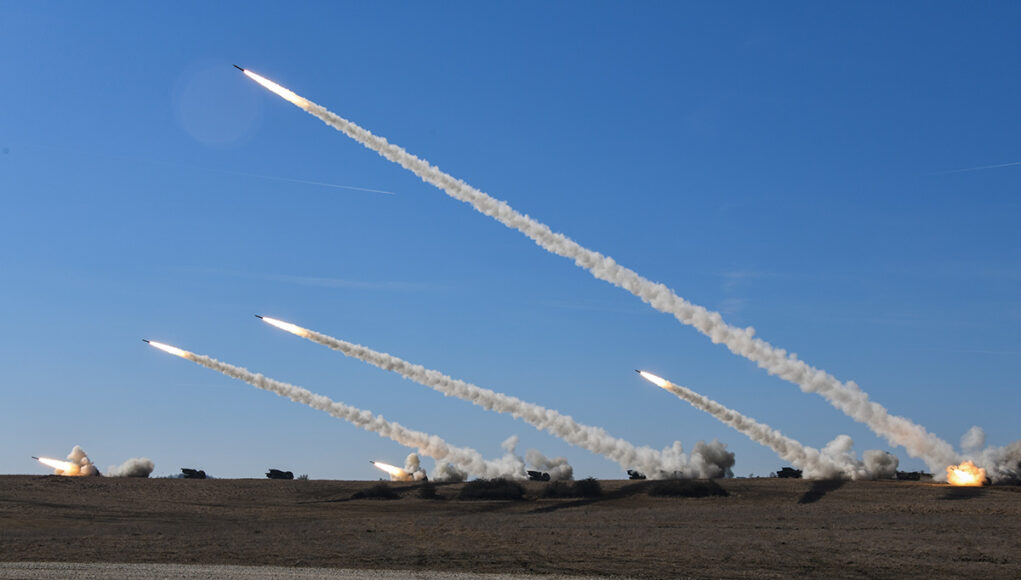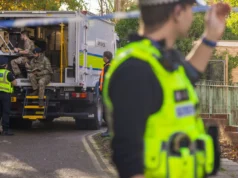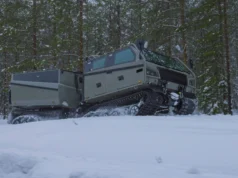Lockheed Martin has been awarded a $214 million contract by the U.S. Army for the continued upgrade of M270 Multiple Launch Rocket Systems (MLRS), with funding contributions from the UK, Finland, and Italy.
This latest contract includes the final batch of launchers for the British Army, completing the UK’s planned modernisation programme.
The hybrid contract—cost-plus-fixed-fee and firm-fixed-price—will support the recapitalisation of M270 launchers into the A2 configuration. Work will be carried out at Lockheed Martin facilities in Grand Prairie and New Boston, Texas, and Camden, Arkansas, with completion expected by 30 December 2030.
According to the U.S. Department of Defense, the UK’s contribution forms part of a broader collaborative effort under Fiscal Year 2024 cooperative partner funds. The upgrade aligns with the UK’s wider investment in deep-strike capabilities, including Guided and Extended-Range GMLRS missiles.
Earlier this year, the Ministry of Defence confirmed that 61 M270 MLRS launchers and eight Repair and Recovery Vehicles (RRVs) were already on order via the U.S. Department of Defense.
In a written response to a parliamentary question, Defence Minister Maria Eagle stated that the Ministry was also considering acquiring a further 15 launchers and one additional RRV, although no decision has been publicly confirmed to date.
The UK’s workshare in the MLRS and RRV programme represents roughly 6% of the total programme value, ensuring continued involvement of British industry in long-range artillery systems.
Eagle also noted that the government has committed £800 million over the next decade to procure GMLRS and ER-GMLRS munitions. The specific number of missiles remains classified.
The M270 platform, developed by Lockheed Martin, has played a crucial role on the battlefield in Ukraine, delivering high-precision long-range strikes.














So we have upgraded our current stock off 44 units (acoridng to a quick glance at Wikipedia) and already ordered extra units to put us to 61? There also might be a future order of another 15 units to take us up to 76?
Yes, the 75 include Recovery variants.
With the never ending wait for the SDR comments this has been in limbo for ages, aling with things like ground launched Brimstone.
It seems unclear, to me at least, if this refers to the final 15 being funded, or the previous batch, already announced.
What is awaited now is the corresponding expansion of 26RA and 3 RHA, which I believe are currently 2 Fire Battery Regiments.
Assume a third Fire Battery per Regiment as part of Wavell.
Sorry, exclude, the 75 are launchers.
Considering the dmg a half dozen or so launchers have done for Ukraine, 70 odd isn’t actually a bad number. The question is how many missiles will be brought to ensure they can sustain capability.
Ukraine has like 40 HIMARS and 20 M270’s, not half a dozen.
Yeah they do now but they didn’t at the start when the completely wiped out Russian supply lines and changed the war.
Good news, 76 MLRS is about where we should be for suppressive fire, we could do with the long range ATACMS version for targeting key infrastructure such as bridges, hardened C3 sites, radar sites etc at long range. One thing that the Ukraine war has shown is the vulnerability of Russia’s military which is very dependent upon railhead logistic hubs and these are perfect ATACMS targets.
I’m hoping this contract is supported by adequate numbers of munitions to keep the new systems in the fight. Not heard much about MLRS munitions- seems we will need to go cap in hand to LM for our munitions- would like to see a UK based manufacturing capability on this issue, especially as the Germans have manufacturing capacity for MLRS.
The MLRS A2 capability does however look a significant step change to the batch 1 in terms of accuracy, adaptability and ability to fire a more diverse range of rockets. Overall good new with the only con being a lack of UK manufacturing for the munitions which could or should have been part of the contract for these new systems.
They are scheduled for delivery in 2030 – five years away. If the lessons learned from Ukraine are anything to go by, the Russians will have found a way to counter ER GMLRS by then, probably by being able to rapidly identify the firing point. Or by being able to engage the rocket in its terminal phase
For all sorts of reasons the Army should get a tracked and armoured replacement for the AS90. To my mind, the admittedly high tech but lightweight RCW155 mounted on 8×8 Boxer will be too vulnerable for high intensity combat. I like the Korean K9A1 Thunder system. The Koreans offered to build a factory here to make them
Its a difficult decision isnt it- tracked or wheeled SPGs?
The RCH 155 has a claim to fame to being able to drive to firing point, fire off its barrage and exit the area much quicker than a tracked vehicle could. So what is the priority- redeploying to avoid counter-battery fire or being able to sustain the risk of damage from a counter-battery fire? Id think that matter is one of much debate within NATO- the Poles have gone all in with K9A1 whilst retaining their Krab (polish As90s), France very much Caesar which is proving very effective in Ukraine and has some valid claim to being the most effective artillery system in the war to date.
I’ve got a feeling there is no clear winning answer and that tracked vs wheeled SPGs is going to still be debated well into the 2050s.
Agree.
What kind of weapon do you envisage the Russians being able to counter battery ER GMLRS. I can’t see such a development with in their capabilities. It’s 150km range which is beyond their drones or conventional artillery and I can’t see their rocket guidance ever being that good especially in a denied environment, GLONASS just does not support that kind of accuracy.
I don’t see any evidence of AI and image recognition from them as yet either that’s going to track down an M270 at nearly 100 miles.
Agreed.
As far as I understand it, Russian hits on HIMARS launchers (very few and far between) and SPGs have primarily been due to them being identified by a recon drone and being hit with one of their better kamikaze drones. Not counter battery at all, or at least not what we consider it as.
The lesson from that is to make sure we have good counter-UAV solutions for our deployed forces, rather than give up an effective strike solution.
The MLRS RRV is a UK only mod, built here. So why would it be in contract?. Unless there is now one built and designed in the US for there use and we simply buy it off the shelf?. Any one on here enlighten me on that?
The way things are going we are going to need to keep a permanent multination force in the Baltic states to checkmate comrade Putin from any ambitions he has in that direction.
Do we have enough at 77?
And follow up question – do we have the logistical, storage and industrial capacity to keep 77 MLRS fed? 77 is a lot by any nation’s standards
No we do not, which is why have 75/77 when do not have the resupply to keep them in the battle, or will we fix it the British way, make do and mend and just hope we never have deploy more than a few.
Honestly that seems to be our way these days – but a few, hand-wave the supply chain or the future and hope we never need any of it. I’m genuinely frightened that no-one in power is looking at what would happen if we do get into a conventional, sprawling war that goes on for years rather than a few days.
^ Buy a few, not but a few – the autocorrect on my phone is ridiculous
I wonder what the establishment of a GMLRS regiment is? 3 batterys of 6 launchers? Or is it 4 batterys? 3 regiments (2 regular, one reserve)) of 18 would total 54, leaving 23 in war reserve. That would be a sensible allocation. But we always cheapskate on war reserves, so I doubt that’s how they are allocated, more like two regiments of 24 each and the remainder earmarked for training and the reserve regiment.
Anyone got.a more definitive picture?
I believe 26RA and 3 RHA have 2 Fire Batteries each.
I want to say 9 launchers per Battery, will have to check.
2 more Batteries would be furnished by 101, the Reserve Regiment.
I recall the army wants to move from 4 plus 2 to 6 plus 2, so a third Battery to form per regular Regiment, if the manpower can be shuffled about with Wavell.